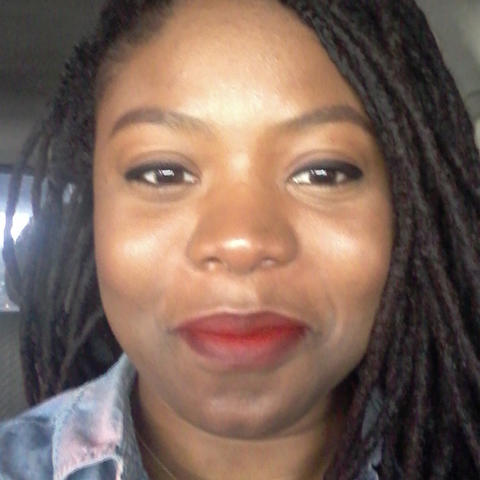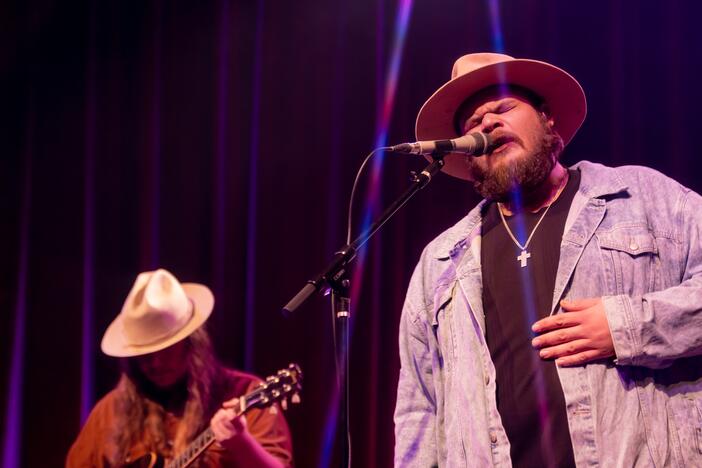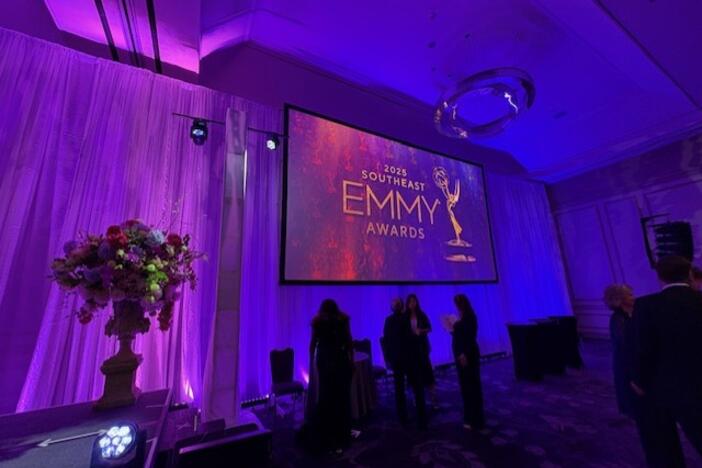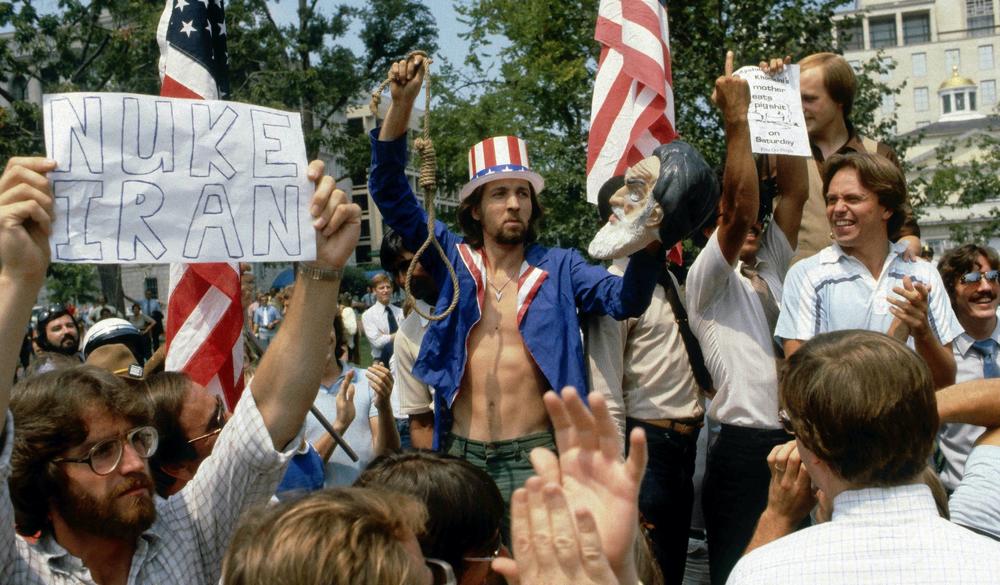
Section Branding
Header Content
American Experience Revisits the 1979 Iran Hostage Crisis
Primary Content

PBS American Experience and the Carter Presidential Library, in partnership with GPB, are pleased to present an exclusive preview of extended clips from the new two-part documentary, Taken Hostage, followed by a discussion with former hostage and press attaché to the U.S. Embassy Barry Rosen, his wife Barbara, retired U.S. Army Colonel James Q. Roberts and filmmaker Robert Stone, moderated by Executive Producer Cameo George. Click here to register for this free event and keep reading to find out more about Taken Hostage from the WGBH Educational Foundation and the team behind the film.
A Closer Look at the Iran Hostage Crisis
The new film Taken Hostage from AMERICAN EXPERIENCE unfolds like a political thriller, following the plight of 52 American diplomats, Marines and civilians who were taken hostage at the American Embassy in Tehran on November 4, 1979 and held
until January 1981. The crisis would transform both the U.S. and Iran and upend the focus and direction of American foreign policy.
The world watched as the U.S. received a daily barrage of humiliation, vitriol and hatred for over a year from a country, led by the Shah of Iran, that had long been one of our closest allies.
For filmmaker Robert Stone, making the two-part documentary was a way to dig deep into a longtime fascination.
“I was in college when the hostage crisis occurred, and my history professor tossed out everything that he was going to teach us and instead taught us all about the history of American and Iranian relations—everything we weren’t hearing on the news,” he said. “I’ve never forgotten it.”
Oscar-nominee Stone, who has produced seven AMERICAN EXPERIENCE films, including Chasing the Moon and Guerrilla: The Taking of Patty Hearst, uncovered previously unseen footage, including images of the violent Islamic Revolution that overthrew the Shah and video of the hostages taken by the hostage takers.
“This extraordinary film explores America’s first encounter with radical Islam, placing the hostage crisis within a larger historical context and helping us understand the roots of a
conflict still being waged today,” said AMERICAN EXPERIENCE Executive Producer Cameo George.
Stone said he relishes the opportunity to explore turning points in our nation’s history.
“Taken Hostage is an extension of the type of film I’ve been making for a long time. It’s a broad sweep of history, anchored around personal narratives, with a tight cast of people who are personal witnesses to the events that unfold.”
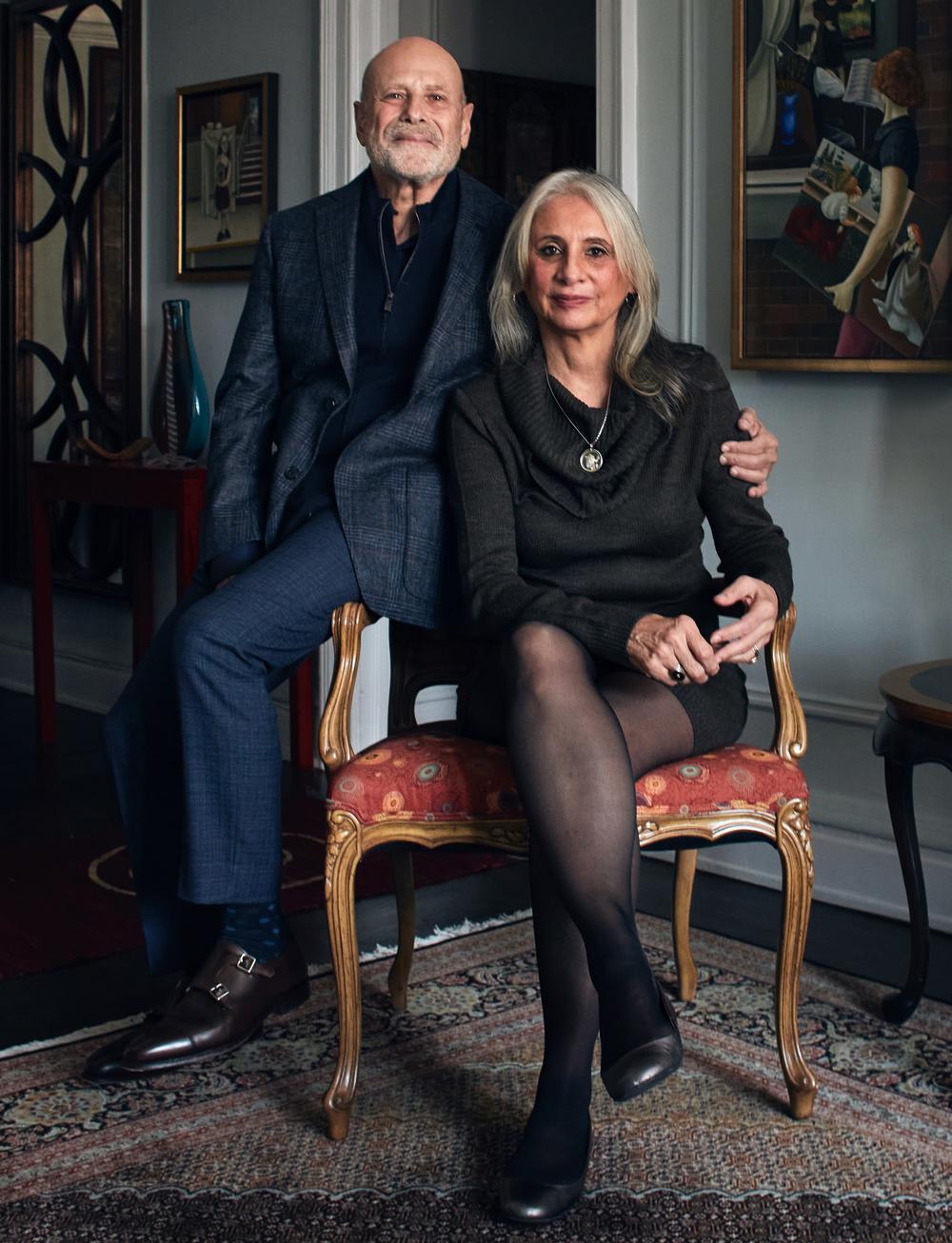
The crisis is told largely through the recollections of former hostage Barry Rosen, who was press attaché at the Embassy, and his wife Barbara. Through intimate interviews, a harrowing drama unfolds of abuse, unbearable isolation and anxiety about a resolution to the crisis.
“I very much didn’t want this to be a dry retelling of history,” said Stone. “When I found the Rosens, I immediately knew that their story was the framework around which I wanted to peg the movie. They are both so expressive and so knowledgeable. When Barry speaks about history, he’s speaking from his own personal experience.”
Barbara, who lived in New York City during the media frenzy that erupted during the crisis, became something of a celebrity, appearing on talk shows and news programs and speaking around the world on behalf of the hostages.
“She is so full of life and so full of energy,” said Stone. “And they’ve got such a wonderful love story.”
He said it’s impossible to understand our involvement in the Middle East without coming to grips with the Iranian Revolution and America’s role in that cataclysmic historical event.
“How Iran went from being one of America’s closest allies in the world to one of our greatest enemies is a story that few Americans know anything about,” he said. “It’s the backstory to where we are today with respect to Iran and to countries throughout the
Middle East.”
Seeing such vivid footage of a revolution was sobering, he added.
“Witnessing the horrors of what happens when a country devolves into revolution is a sobering reminder of how easy it is for political instability to give way to slaughter, chaos and repression. Given where America is these days politically it’s a timely and
cautionary tale.”
Through Women’s Eyes
One of the most dramatic moments in Taken Hostage is when the Shah of Iran storms out of an interview with Hilary Brown of ABC News.
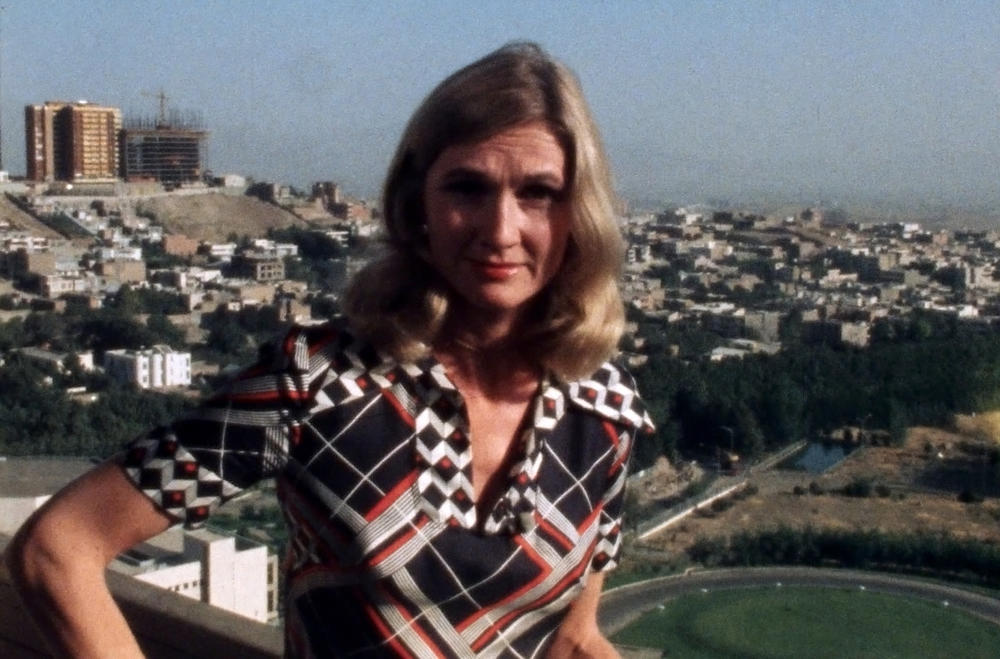
“I’ve seen many interviews with the Shah, because he loved talking to the press,” said filmmaker Robert Stone. “But I’d never seen that one before. She's the only one
I ever saw get under his skin—she pressed him just as hard as any male journalists had, but the Shah just couldn’t stand to be spoken to like that by a woman.”
The role of women in Iran and their fundamental rights there and in many other theocratic nations stirs protests and passions to this day and surfaces as a major theme of Taken Hostage.
Through the stories of Brown, ABC’s first female foreign correspondent, and journalist
Carole Jerome, the film counters a very male-oriented view of the Middle East,
said Stone.
As the Shah tortured his citizens while building his own wealth, he also elevated women with educational opportunities and social status. “That was so shocking and traumatic for this very conservative, religious country,” said Stone. “It was a big driver of the
Revolution.”
“The backlash was driven entirely by men and has not been talked about enough,” he added. “These two women had a lot to add because they saw it from a different perspective.”


